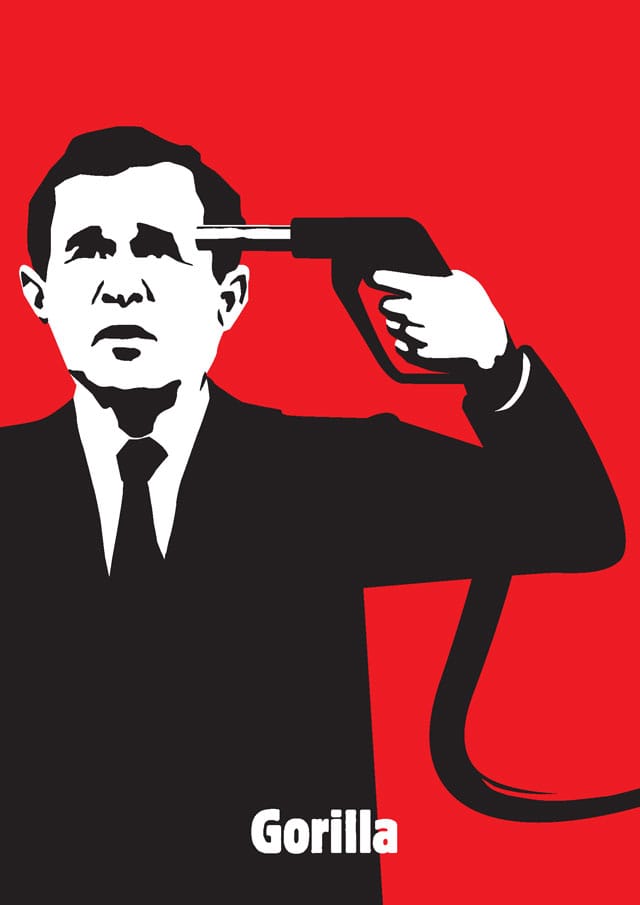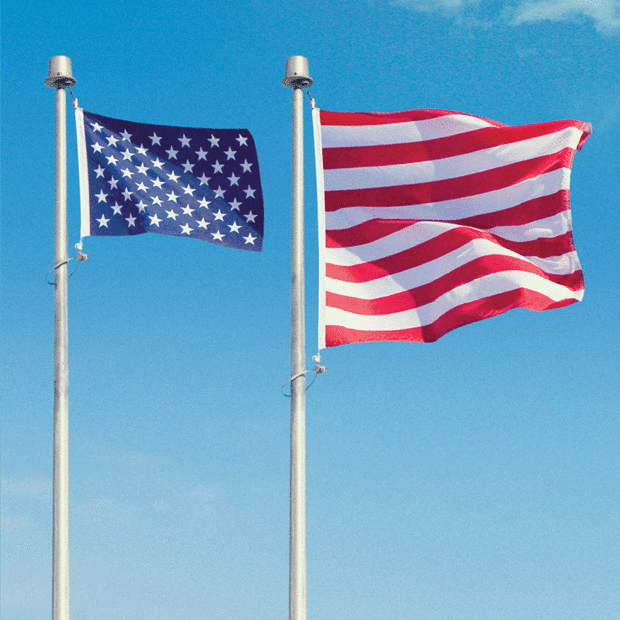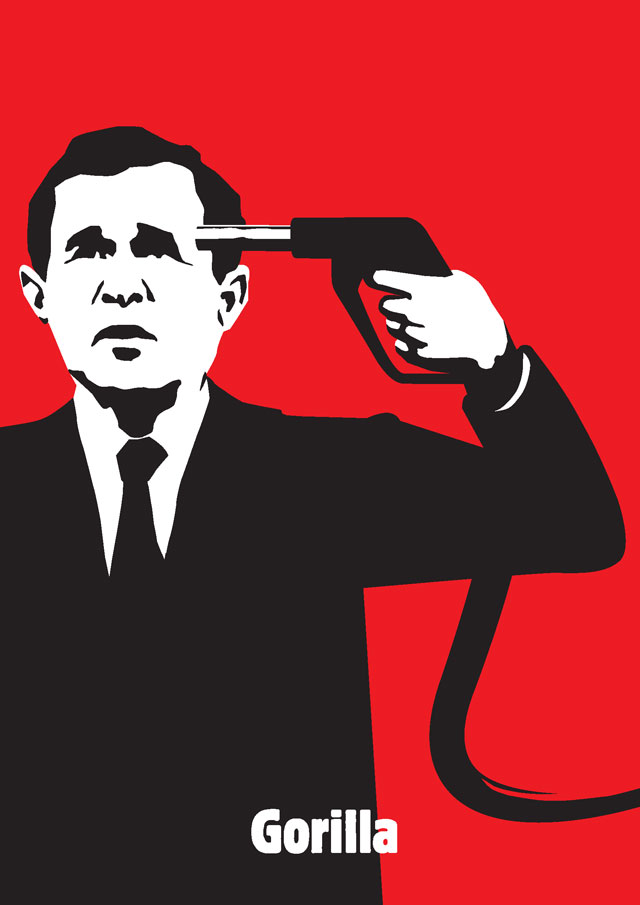
In this Archive piece, Robert Urquhart interviewed Gorilla, a collective of designers (made up of Designpolitie, Lesley Moore and Herman van Bostelen) two years into an ongoing project which involves publishing a daily ‘Gorilla’ in the Dutch national press. Art, design, culture and politics are seen to be more strongly connected in the Netherlands than elsewhere in Europe, so what lessons can the rest of the world take from Dutch artists and designers getting involved in political debates?
I think that Dutch government always has been very present in stimulating art and design in the Netherlands. Already from the beginning of the twentieth century the government gave assignments to designers, architects and artists. Still the government is one of the biggest 'clients' for the design and architecture industry. This awareness was also visible in our currency, our tax forms, our street signage, the overload of museums in the Netherlands and so on. The government also supports young artists, architects and designers with grants when they start a promising career.
I think that all these elements create an atmosphere in which Dutch creatives feel free to participate in the debate. And let’s not forget the liberal drugs and sex industry policies, which give people the feeling that everything is possible in the Netherlands. I think that this is also changing rapidly, though. British readers might be aware of the issue recently of Geert Wilders being refused entry to Britain (and then being allowed in) – there is a lot of polarisation going on at the moment in the Netherlands, especially focusing on the community.
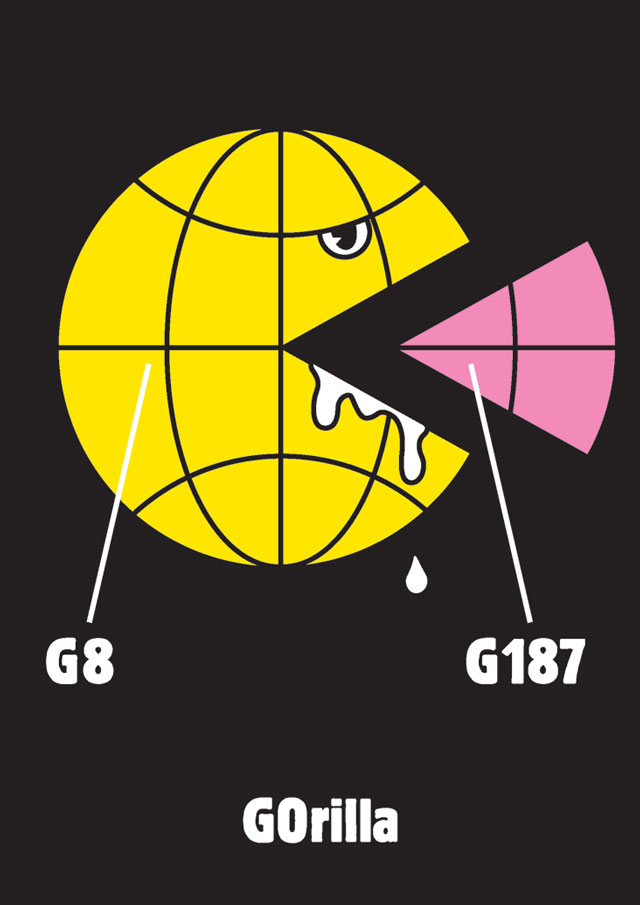
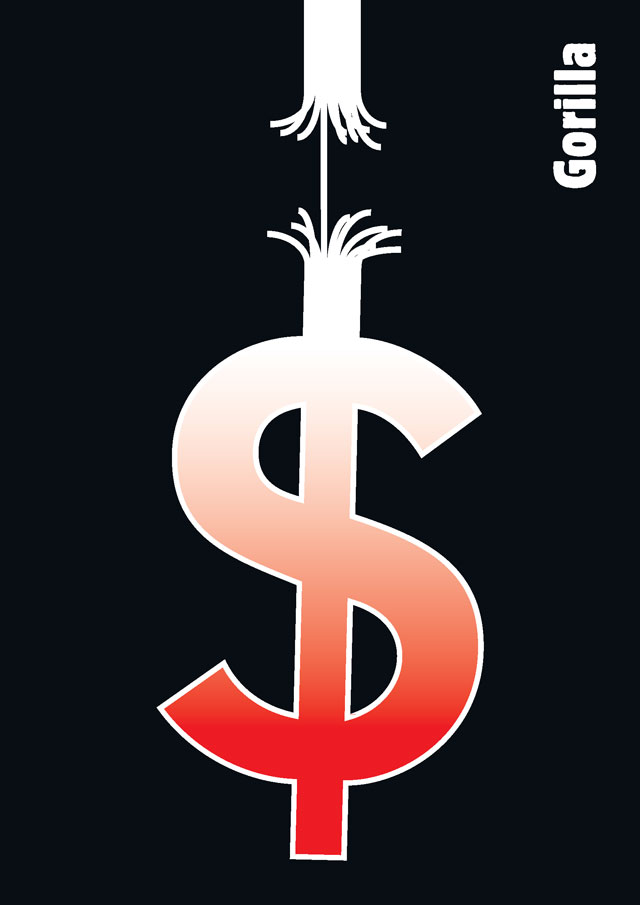
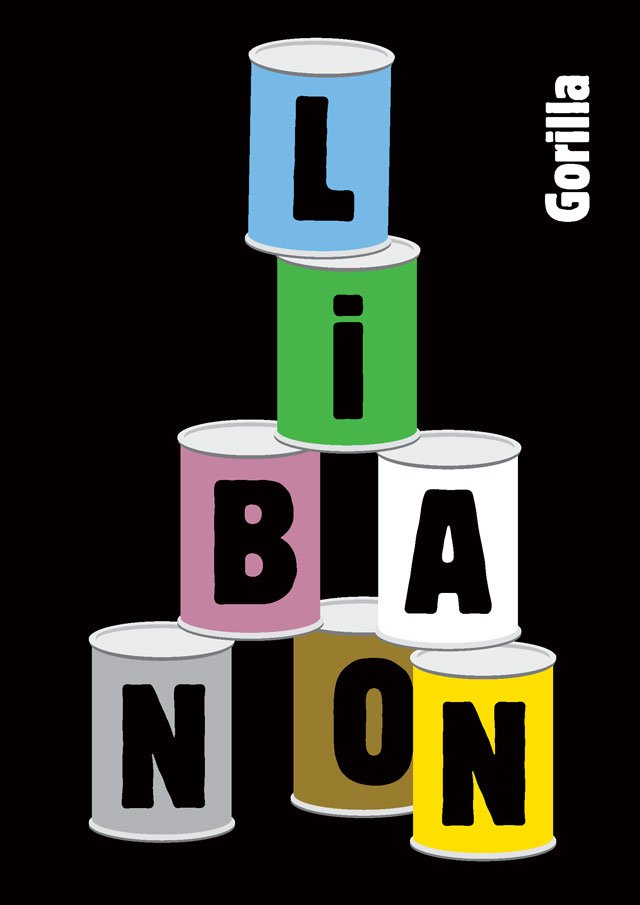
As a team, what ideals do you share? What common factors brought you together?
The truth is important but it can be hard to find when you see or hear or read the news and accept it at it is – it can be very wrong only a day later. So it is very important to weigh up the news critically. What is true and what not? Or, to put it better, what is reasonable to believe and what not? What is an obsessive focus and what is 'real news'? Within that spectrum we wanted to demask and take a satirical look at the people and organisations, countries and politicians that try to sell you a beautiful fairytale.
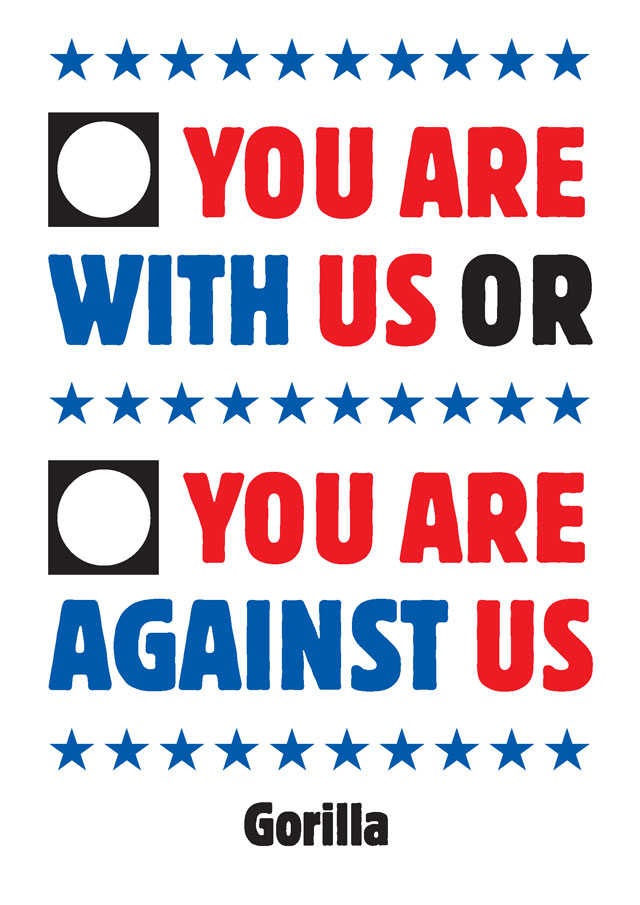
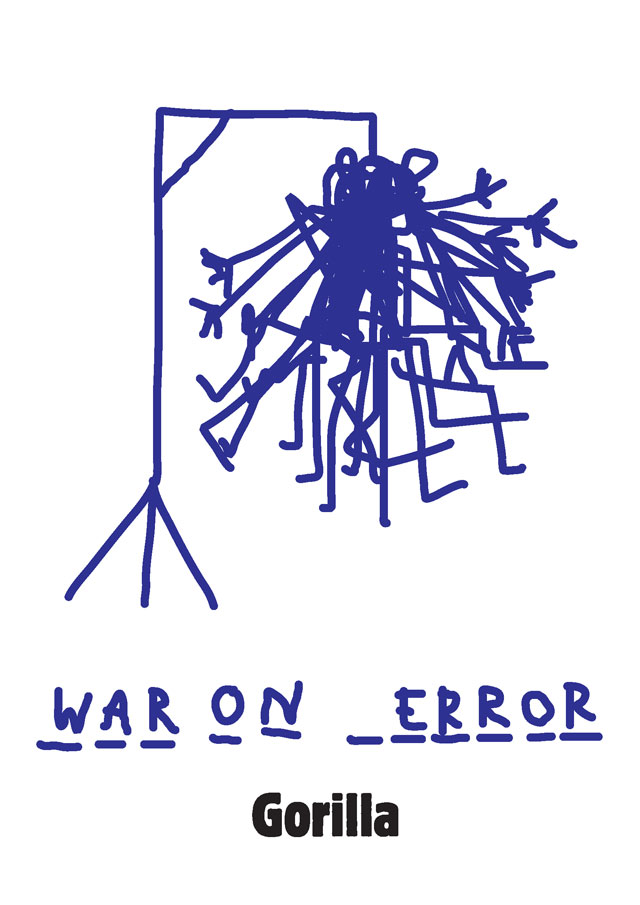
On ownership and permission… do people feel that it is their right to 'own' your work because they share the message that you are giving out? What is the difference between commercial work and public art – do you feel that people may confuse the two?
The ‘Gorillas’ are free to download. We do that on purpose, because we think it is important that a good Gorilla travels the World Wide Web. Gorilla is not art. I think the best way to look at it is as a visual column in which we have journalistic freedom to say what we want. Our tool is graphic design. In a way we always make a poster the size of a pack of cigarettes. That is why they always have this poster or pamphlet feeling. When you blow them up to A0 size, they make excellent posters.
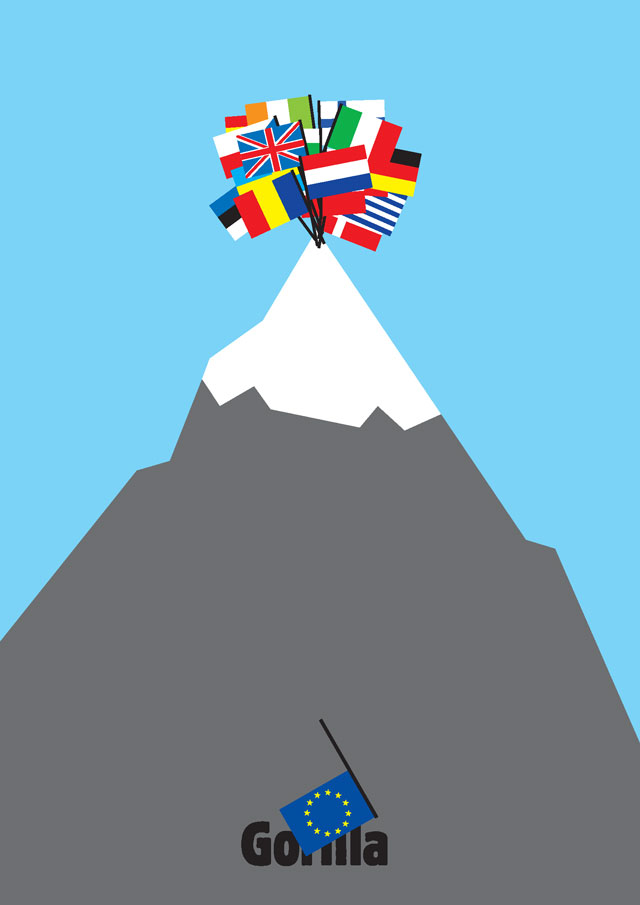
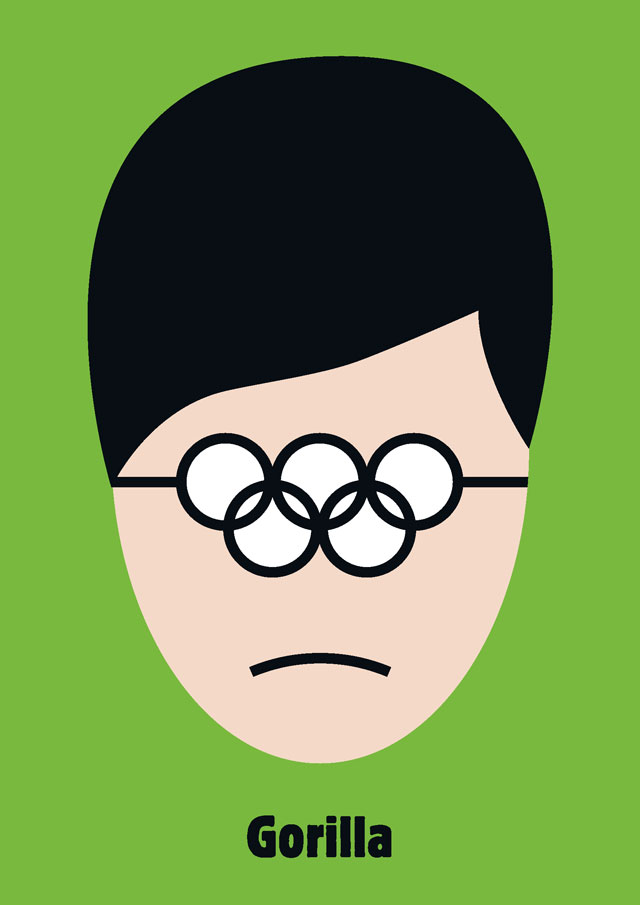
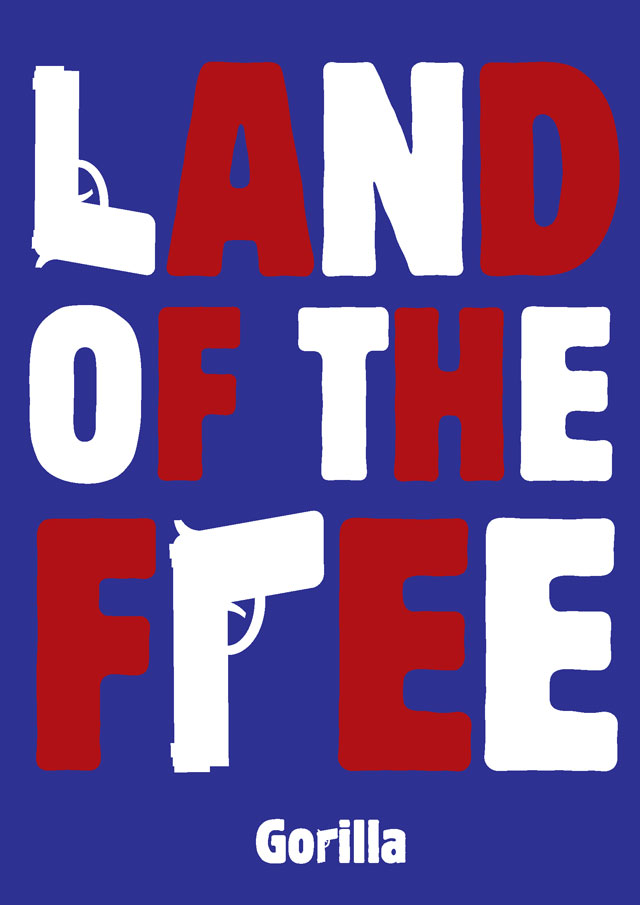
Who else is taking on the challenge of satirical artwork? Who do you identify with?
Of course there are a lot of illustrious people who do and did that. We mostly relate to graphic designers and artists with a message, from Tibor Kalman and Anthon Beeke to Paul Rand and Barbara Kruger, from Klaus Staeck to Milton Glaser, Grapus and so on.
What are your current plans for Gorilla?
We really would like to plug Gorilla on more media, in the Netherlands and abroad. It would be really exciting to find a British, American or German magazine or website that wants to publish Gorilla. Next to that we are giving presentations, workshops and exhibitions. We want to continue that in the Netherlands and abroad.
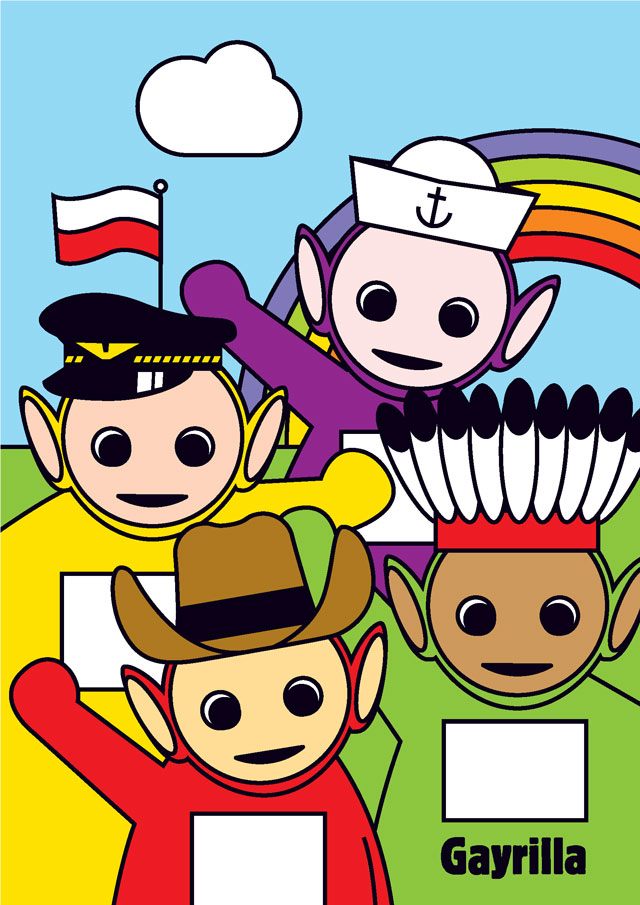
Tinky Winky Is Gay
This Gorilla was created after Polish parliament tried to ban the Teletubbies from national television because they thought Tinky Winky was gay (because of the handbag). In conservative, Catholic East European Poland, this was probably hard to accept.
When you see this Gorilla you will immediately recognise the Teletubbies. But something weird happened. They are dressed like the Village People, an Eighties band associated with the gay scene. For this special occasion we renamed ourselves 'Gayrilla'.
In our opinion this is also a good example of how Gorilla tends to react to ridiculous, false or discriminatory news facts. We almost always use irony to ridicule the subject. Another thing we often do is to use well-known images, logos, etcetera to create new messages. In this case the very well known characters of the Teletubbies and the iconic Village People.
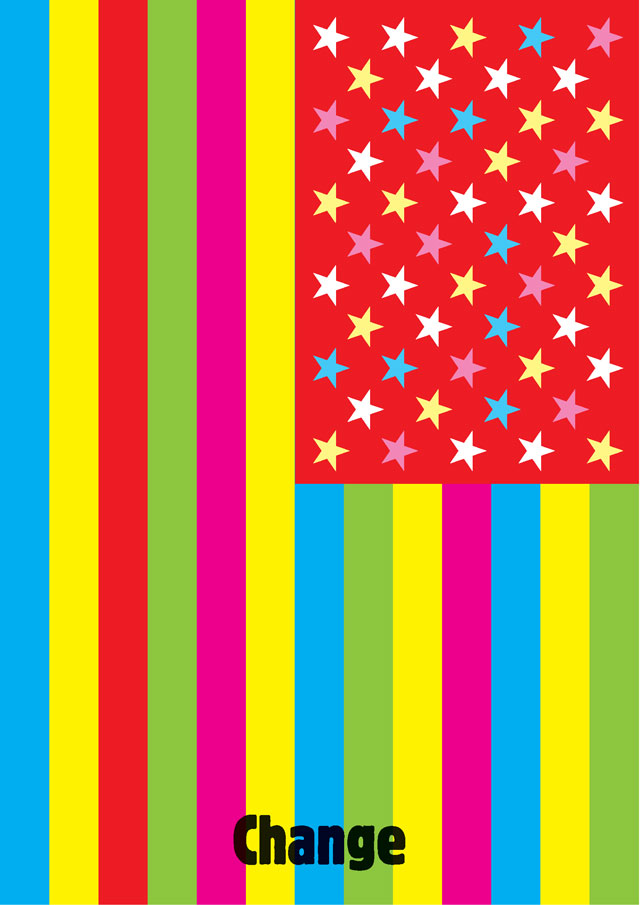
Change We Can Believe In
This Gorilla was created during the intense fight for the Democratic vote between Hillary Clinton and Barack Obama. The general feeling that change was coming was translated into a multi-coloured American flag. Again, we renamed Gorilla, this time into 'Change'.
What we especially like about this Gorilla is that it visualises the feeling of hope. It is almost a serious proposal for a new flag for the not always so peaceful United States. With this flag they can harm nobody. The only thing they can preach with this flag is peace
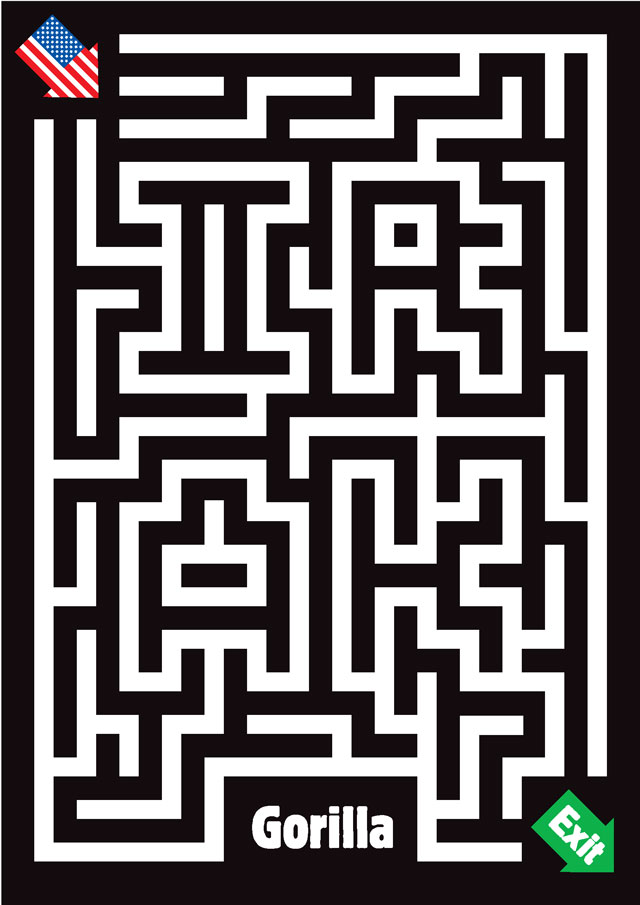
America's Exit Strategy
This is an old one, but also an iconic one. It was created in the first months that we were working on Gorilla. It was made at the moment that Bush was having his Waterloo in Iraq. A lot of dead American soldiers, a lot of dead Iraqi citizens, chaos, extremely high costs, a lot of foreign criticism etcetera. There was no way out for the Americans, and it was their own fault, or at least their own responsibility.
It is a simple image, everybody will recognise it. The tension in the image rises when you take a closer look and see the American flag and the word “IRAK” in the labyrinth itself. When you try to get through the labyrinth you will get very frustrated and find out that this is impossible. It’s a typical example of a Gorilla that you can read in different layers. It strikes you within a second, but when you take a closer look you will discover more. This Gorilla is also a very popular one. It is printed as a T-shirt and poster. See the latest Gorillas at thedailygorilla.nl/
The Daily Gorilla won a Dutch Design Award, The European Design Awards (including the Juryprize), Red Dot Award and a Dutch Art Directors Club Silver Lamp and was nominated for the Rotterdam Designprijs.
This piece first appeared in Grafik 180, December 2009

